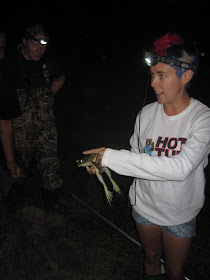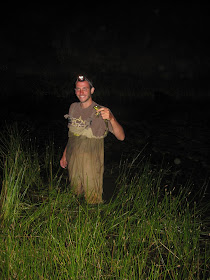 Jenny is one of my interns this summer, but she has been working with me since fall semester last year. She started reviewing video data from the 2012 field season, and now she is conducting her own independent project. She has graciously written a guest blog post describing her exciting research. See below:
Jenny is one of my interns this summer, but she has been working with me since fall semester last year. She started reviewing video data from the 2012 field season, and now she is conducting her own independent project. She has graciously written a guest blog post describing her exciting research. See below:This summer, I am studying the ability of California ground squirrels (Otospermophilus beecheyi) to detect and discriminate between two snake predators using olfactory cues. Thanks to the previous research of behavioral ecologists, it has been well established that California ground squirrels can visually recognize snakes along with snake-like patterns and objects. Additionally, California ground squirrels have been shown to display distinct sets of behaviors towards the venomous northern Pacific rattlesnake (Crotalus oreganus) and the nonvenomous Pacific gopher snake (Pituophis catenifer). However, little is known about their olfactory capabilities and what role olfaction might play in their detection and avoidance of snake predators. Because gopher snakes and rattlesnakes are cryptic and often dwell in dark burrows, ground squirrels cannot always rely upon vision to detect them. Therefore, it would likely benefit ground squirrels to have some sort of olfactory perception of snakes.
I have strategically placed a rattlesnake model next to a squirrel burrow (top)
and use snake tongs to handle a gopher snake model (bottom).
Do you think they will fool the squirrels?
To gain more insight into this fascinating predator-prey dynamic, I am filming ground squirrel interactions with visual and olfactory snake cues. I create such cues by using rattlesnake and gopher snake models that are left unscented or scented with their respective odors. I place these snake models next to squirrel burrows and hope that squirrels interact with them. I use security cameras to record squirrel interactions so that I can later quantify behaviors to see if visual detection of snakes is aided by olfactory and/or visual cues. Additionally, I am scenting dirt with snake odors to see if grounds squirrels can detect snakes using olfaction alone. Finally, I look forward to later quantifying the squirrels’ interactions with my treatments to see if they display different behaviors towards gopher snake cues versus rattlesnake cues.
I position one of my security cameras over a squirrel burrow. I will leave it running
all day to opportunistically record squirrels interacting with the rattlesnake model
I measure the distance of the model from the burrow
The snake model is set up (bottom right corner) and the security camera
is set up to record squirrel encounters











